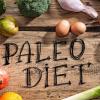CYBERMED LIFE - ORGANIC & NATURAL LIVING
CYBERMED LIFE - ORGANIC & NATURAL LIVING
 Paleolithic-Stone Age Diet: The Paleolithic diet (also called the paleo diet, caveman diet or stone-age diet) is a modern fad diet requiring the sole or predominant consumption of foods presumed to have been the only foods available or consumed by humans during the Paleolithic era.
Paleolithic-Stone Age Diet: The Paleolithic diet (also called the paleo diet, caveman diet or stone-age diet) is a modern fad diet requiring the sole or predominant consumption of foods presumed to have been the only foods available or consumed by humans during the Paleolithic era.
The digestive abilities of anatomically modern humans, however, are different from those of Paleolithic humans, which undermines the diet's core premise. During the 2.6-million-year-long Paleolithic era, the highly variable climate and worldwide spread of human populations meant that humans were, by necessity, nutritionally adaptable. Supporters of the diet mistakenly presuppose that human digestion has remained essentially unchanged over time.
While there is wide variability in the way the paleo diet is interpreted, the diet typically includes vegetables, fruits, nuts, roots, and meat and typically excludes foods such as dairy products, grains, sugar, legumes, processed oils, salt, alcohol or coffee. The diet is based on avoiding not just processed foods, but rather the foods that humans began eating after the Neolithic Revolution when humans transitioned from hunter-gatherer lifestyles to settled agriculture. The ideas behind the diet can be traced to Walter Voegtlin, and were popularized in the best-selling books of Loren Cordain.
Like other fad diets, the Paleo diet is promoted as a way of improving health. There is some evidence that following this diet may lead to improvements in terms of body composition and metabolic effects compared with the typical Western diet or compared with diets recommended by national nutritional guidelines. There is no good evidence, however, that the diet helps with weight loss, other than through the normal mechanisms of calorie restriction. Following the Paleo diet can lead to an inadequate calcium intake, and side effects can include weakness, diarrhea, and headaches.